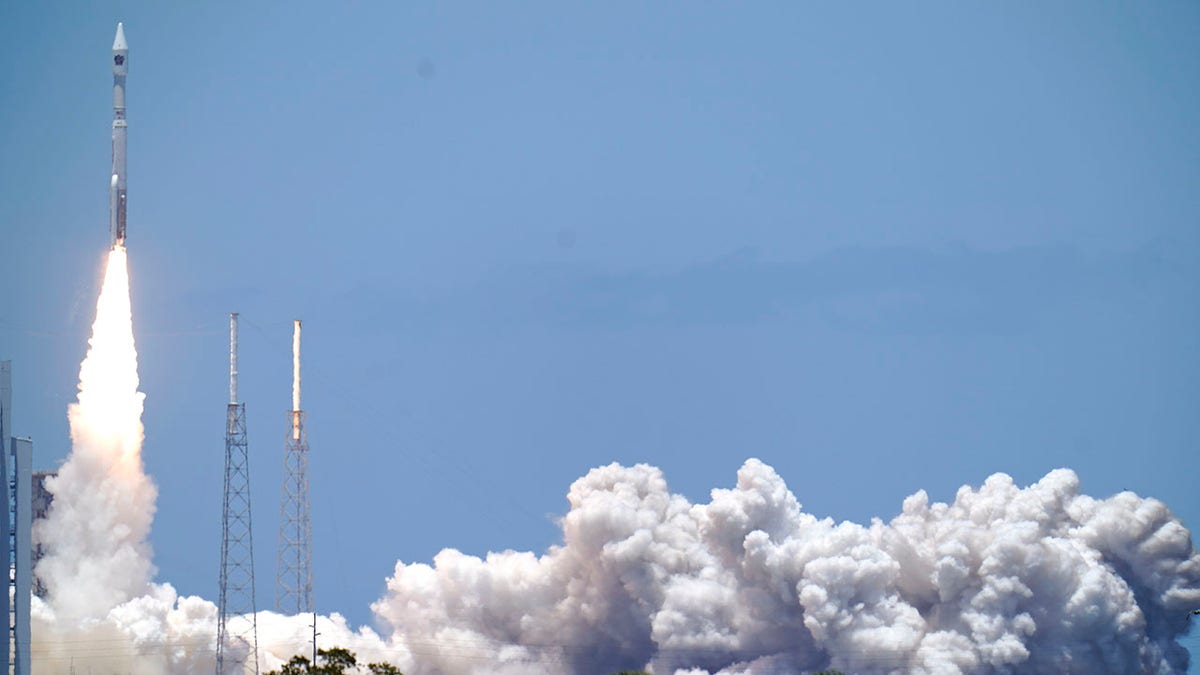NASA rocket passes key test for Artemis mission
Acting NASA Administrator Steve Jurczyk provides insight on ‘FOX News Live.’
The U.S. Space Force launched a billion-dollar missile-warning satellite into orbit on Tuesday.
After a 24-hour delay due to a faulty temperature sensor in ground equipment, the United Launch Alliance (ULA) Atlas 5 rocket – with two small rideshare payloads – lifted off from Florida's Cape Canaveral Space Force Station at 1:37 p.m. ET.
CHINA SAYS IT HAS LANDED ITS FIRST PROBE ON MARS
The rocket used a Russian-built RD-180 main engine and strap-on solid-fuel boosters.
"Separation confirmed! The United Launch Alliance #AtlasV rocket has deployed the fifth Space Based Infrared System Geosynchronous Earth Orbit (#SBIRSGEO5) satellite to save lives through early warning missile detection," ULA announced in a tweet.
"144," tweeted ULA President Tory Bruno, in reference to ULA's 144th successful mission.
"Thank you to our mission partners for the tremendous teamwork as we processed and launched this asset that provides powerful surveillance and critical capabilities to protect our warfighters," ULA Vice President of Government and Commercial Programs Gary Wentz said in a statement. "We are proud to work with the U.S. Space Force to continue to meet the national security needs of our country."
BATTLING THE STIGMA OF BELIEVING IN UFOS
The approximately 10-and-a-half-minute launch was the fifth in the series of space-based infrared system satellites, which are meant to replace the Defense Support Program constellation of surveillance satellites.
It was also the 87th launch of the 194-foot-tall Atlas V rocket and the 72nd Atlas V to launch from Space Launch Complex-41.
Space News reported Tuesday that the spacecraft's "Technology Demonstration Orbiter" payloads – TDO-3 and TDO-4 – were successfully deployed and released from the 950,000-pound rocket's Centaur upper stage around 16 and a half minutes after liftoff.

A United Launch Alliance Atlas V rocket carrying U.S. Space Force's fifth Space Based Infrared System Geosynchronous satellite (SBIRS GEO 5) for missile early-warning detection, lifts off from Space Launch Complex 41 at the Cape Canaveral Space Force Station, Tuesday, May 18, 2021, in Cape Canaveral, Fla. (AP Photo/John Raoux)
Nearly 43 minutes after liftoff, the satellite separated and deployed as well to a geosynchronous transfer orbit.
A geosynchronous orbit is a high Earth orbit that allows satellites to match the rotation of the Earth, according to Space.com.
According to the Associated Press, Lockheed Martin was awarded a $1.86 billion contract for the newly improved satellite in addition to one slated to launch in 2022.
Both of the satellites are intended for orbit at an altitude of 22,300 miles and Spaceflight Now reported Tuesday that "SBIRS" GEO 5 satellite's infrared payloads have the ability to detect heat from missile exhaust around the world.
CLICK HERE FOR THE FOX NEWS APP
The military’s first SBIRS satellite launched into geosynchronous Earth orbit in 2011.
The company's next launch is for the Space Force's Space and Missile Systems Center Space Test Program (STP)-3 mission, targeted for June 23, 2021, from the same launch complex.
The Associated Press contributed to this report.



